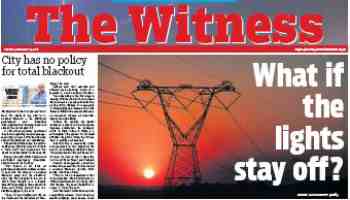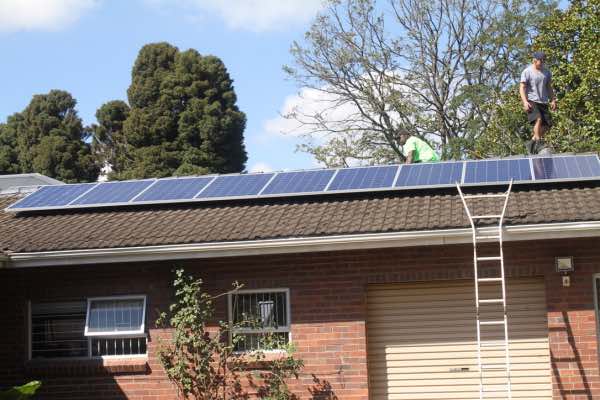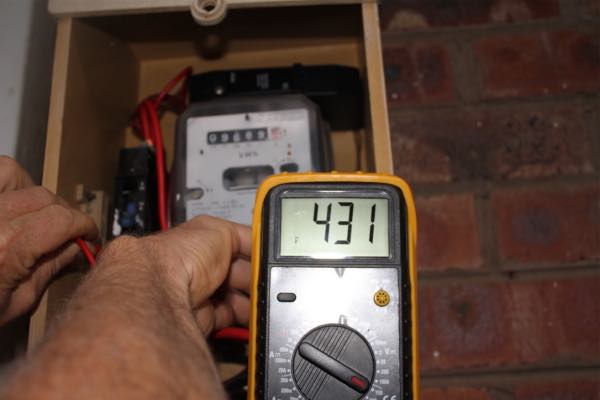- Homepage
- Solar geek
- Total Blackout
Total blackout
Total blackout in developed countries is highly unlikely, but it has happened. In 2003, Italy experienced a nationwide disruption when a tree fell across a main line bringing energy from a Swiss hydroelectric power-station.
Within four seconds two further power-lines from France failed due to the sudden increase in demand; moments later the whole of Italy was in darkness. The cascading effect even caused loss of electricity in parts of Switzerland.
30,000 people were stranded on trains overnight; all flights were cancelled.

This page was last updated by Bernard Preston on 7th June, 2024.
Whilst such a scenario is most uncommon in a sophisticated country, it has happened numerous times in Africa; and it was threatening SA daily until the economy shrunk and demand dropped in 2019.
Twice in December, 2015, Zambia suffered total blackouts due to inadequate long term planning; and the drought which dropped the level of water on Kariba-dam.
The winter of 2020 has been one of great discontent but for the first time in a decade not from the threat of total blackout; there has been almost no load-shedding due to the collapse of the economy. That happened as a result of the gross corruption under the Zuma administration but now with the virus as the cherry on top.
Eskom is one of the worst air-polluters in the world. In 2022 South Africans faced an extra 10% increase as the utility contemplates a mandatory R300 billion upgrade to reduce CO2; or close a third of its power-stations.
"Criticism may not be agreeable, but it is necessary. It fulfills the same function as pain in the human body; it calls attention to an unhealthy state of things."
- Winston Churchill
Theft of electricity, lack of maintenance and poor control over coal supplies have brought utility company Eskom to its knees. And the refusal of the Mbeki government in South Africa to sanction new power-stations.
With its stock reduced to junk-status by international finance houses, Eskom faces a bleak future; several chairmen has resigned.
Some of them facing charges of collaborating in the state-capture that has brought about SA's downfall.
Overt government policy has resulted in the termination of the contracts of the majority of white engineers and technicians; and near-collapse of management.
International standards require a 12 to 15 percent reserve of power and South Africa has none; rolling blackouts were a daily reality for many people in 2015 and have continued on a regular basis. Business and industry are in turmoil with unplanned outages causing havoc. And so it continues to happen in 2021 with no light at the end of the tunnel.
Coal stocks at three power stations were sufficient for only ten days in February, 2019, instead of the mandatory six-weeks.
It took Italy two days to restore power completely but in South Africa, if Eskom suddenly loses control of the grid, it is estimated that it would take several weeks to get the lights back on.
Within five days, with the pumps lying idle, there would also be a widespread water-shortage too.
Another sudden loss of a major turbine, as happened in 2014 when a vital coal-silo collapsed, could easily plunge South Africa into total blackout.

The huge silo, seconds before it collapsed.
Total Blackout
Total blackout and regular loss of power is extremely frustrating but there is an alternative.
It came close in 2013 when unseasonal heavy rain caught Eskom short; lack of foresight meant a grave shortage of dry-coal and South Africa was for the first time brought to the brink.
The lack of any surplus means that for several years South Africans have been faced with the nightmare of a total blackout. When a technician inadvertently, or deliberately dropped a heavy bolt into a turbine at the Koeberg nuclear power station, it also nearly caused a catastrophe.
The material expressed on this page is gleaned from the nutritional and environmental literature; it is clearly referenced. A plain distinction is made between the author's opinion and that which is scientifically proven. When in doubt consult your health professional.
To suggest a correction or clarification, write to Dr Bernard Preston here. Contact.
Faced with almost daily blackouts, businesses and private homes have resorted to expensive generators; every new progressive development includes an alternate source of power, fueled by diesel or petrol.
Crime too has soared as thieves have welcomed the rolling blackouts for their nefarious activities.
The question is whether alternate forms of energy such as wind and solar could provide a solution; the answer is an emphatic yes.
One of the huge problems faced by Eskom is that in the past during periods of surplus electricity they have been able to pump water to holding dams high in the mountains, able to be released again through turbines when demand soars in the evening.
Now there are rarely times when they have enough energy to fill these holding dams.
At a national level a few alternative energy farms provide power during the day to supply such generators. Unlike huge coal and nuclear utilities which take decades of planning and erection, a solar station can be built in less than a year.
Newsletter
Our newsletter is entitled "create a cyan zone" at your home, preserving both yourself and Mother Earth for future generations; and the family too, of course. We promise not to spam you with daily emails promoting various products. You may get an occasional nudge to buy one of my books.
Here are the back issues.
- Lifestyle and ideal body weight
- What are ultra-processed foods?
- Investing in long-term health
- Diseases from plastic exposure
- Intensive lifestyle management for obesity has limited value
- A world largely devoid of Parkinson's Disease
- The impact of friendly bacteria in the tum on the prevention of cancer
- There's a hole in the bucket
- Everyone is talking about weight loss drugs
- Pull the sweet tooth
- If you suffer from heartburn plant a susu
- Refined maize meal and stunting
- Should agriculture and industry get priority for water and electricity?
- Nature is calling
- Mill your own flour
- Bake your own sourdough bread
- Microplastics from our water
- Alternative types of water storage
- Wear your clothes out
- Comfort foods
- Create a bee-friendly environment
- Go to bed slightly hungry
- Keep bees
- Blue zone folk are religious
- Reduce plastic waste
- Family is important
- What can go in compost?
- Grow broad beans for longevity
- Harvest and store sunshine
- Blue zone exercise
- Harvest and store your rainwater
- Create a cyan zone at your home
At a business level, firms that require energy mostly in the day can easily change over to solar. Those requiring power at night would be faced with large and very expensive banks of batteries.
Even so battery technology is growing in leaps and bounds and some South African companies are changing over to the revolutionary Redflow storage system and lithium ion batteries made in Cape Town by SolarMD.
Most of the energy for air-conditioning and refrigeration is required during the heat of the day; efficient freezers require little power at night.
For the private home, a solar-powered generator is certainly a viable option. Right now I am typing on a computer fed by the sun.
Grid-Tied or not?
There are four options for a home solar generator if you are considering whether to be grid-tied or not.
- Off the grid with a stand-alone solar generator and batteries.
- Grid-tied with a solar generator and no batteries is the second option; surplus power during the day is pumped back to the utility. At night electricity is drawn from the Eskom.
- Grid-tied with a solar generator and batteries; excess power from the sun is steered first to storage and when it is fully charged, only then is the surplus sent back to utility.
- Stand alone solar generator and batteries. Not grid-tied but Eskom is available when the stored energy is low; or the weather inclement. A prepaid electricity meter is a good option so there are no costly monthly fees.
All four have their merits. Option 3 is probably the best but it is also the most expensive by at least 50 percent; you are also subject to damaging surges from the utility. The extra cost is slowly recouped as one pumps any surplus back into grid.
Option 2 is probably the common model being used worldwide currently mainly because it is the cheapest. It is quite useless in the event of a total blackout as, without the electrical pressure from the utility, you are unable to utilise your own solar generator. On a bright sunny day you would be without power.
Read more about this option at grid-tied residential solar power.
Option 1 requires a very large bank of batteries, or some deprivation in the event of inclement weather lasting more than a day or two. But it is the very best option in the event of a total blackout. Recently we have upgraded to lithium ion which has dropped dramatically in price; and has better charge parameters.
Option 4 is the one I have. A medium sized bank of batteries which is quite adequate in the event of a single day of cloudy skies. It is also perfect for the total blackout situation; but you are unable to recoup any costs from Eskom. Surplus power might be lost during the day. You are unaffected by any dirty spikes being fed into the grid from the utility.
We have now purchased an E-car. Surplus electricity during the day from the solar generator is stored in the very large battery; it could be tied into our home's overall network but we are not there yet.
The E-car has landed with tell you about our experience; the journey has been as dramatic as the Eagle settling onto the lunar landscape.
Solar powered generator
Solar powered generators are not cheap; here is my setup after numerous upgrades. It is a good option in the event of a total blackout.
- 10kW Microcare inverter
- 3 x 100A Microcare MPPTs, north, east and west-facing.
- 2 x 7.4kWh lithium-ion batteries.
- 10.5kW of PV panels; north, east and west-facing
- Changeover switch to heat the hot-water geyser when the weather is inclement.
- Base load 1500W
- Max load 10kW
This was built in stages; the initial cost was R200,000 fully installed by myself. Since then we have made numerous upgrades costing an extra R150,000.

What will it do?
Just what will it do and how much power will one need to draw from the grid during inclement weather and at night?
We have used 1700kWh of mains power in three and half years. At the beginning of that period I had fewer panels, a 2kVA inverter and only two batteries.
Now, with the above hardware we
- Use the electric oven (2kW) on sunny days.
- Bake bread daily.
- Use the 3kW electric lawnmower.
- All lights, computers and TV.
- Reservoir pump.
- Pool-pump and chlorinator for 8 hours per day. 250kWh per month.
- Three fridges, a vacuum cleaner and all my substantial carpentry tools; thicknesser, lathe and electric-saws.
It does mean some change of routine and a little inconvenience; if it is a cloudy day, one might not be able to bake or mow the grass.
Payback time
The guesstimate is about 7 years. More important is that during rolling load-shedding and the eventuality of a total blackout we do have power.
An inverter produces clean electricity with no surges and brown-outs. It acts as a perfect UPS. The press is full of reports of damaged computers, microwaves and TVs and even some of the larger appliances. Adding those costs to the payback time and one is probably looking at less than 7 years.
"I am facing a huge financial setback with my gate motor, alarm system and three TVs damaged by load shedding."
Michael.
Do it again?
Would I do it again? Yes, certainly but I would do several things differently.
- Go big as you can afford from the start. You will want more in the future and then an expensive solar powered generator upgrade will not be necessary.
- I would not put the PVs on my roof of my home if I could possibly help it. Residential solar panels pitch tells you why. In fact because of large-trees I had no option.
- I would use only the best change over switch available. A cheaper one failed within a year. In fact purchase only premium-equipment; then it hurts only once.
- I would use the uniformly largest PV panels available. It is the same amount of work to install 90 and 545W panels; mind you, an expert tells me that the 280W have the best characteristics currently but that changes daily.
- And whilst one can use different size panels, it means using a stud diode and the MPPT may not function optimally; best is to be uniform.
- I would do more research on batteries.
Our 12V lead crystal batteries were not bad at that time but very expensive; is there another option? Redflow's new Z energy storage system looks like an exciting new innovation but we are now pleased to have moved to lithium-ion; their charge characteristics are far superior.
How diodes work
How diodes work is really only for the would-be boffins; you do not have to know how your computer works in order to use it. But a few things are necessary to understand them. It is the same with total blackout; the more knowledge you have, the better the system you will build. In these pages I share many of the pitfalls that have challenged me.
A diode allows current to flow in one direction only, preventing a PV panel with a higher voltage from domineering another smaller one.
When browsing use right click and "Open Link in New Tab" or you may get a bad gateway signal.
Further upgrades

Further upgrades are in the planning in the light of the shocking surge in voltage recently, destroying much private and municipal property. Going off the grid is again being contemplated; but instead we have settled for prepaid electricity. It has been used only three times in the last twelve months to heat shower-water during prolonged misty weather.
Most of the time the mains breaker is permanently in the off-position to prevent further damage from the utility.
Bernard Preston
Although Bernard Preston is a physics major, that was a long time ago before he turned to giving health care; in short some forty years. Meaning that anybody who is able with his or her hands, willing to listen to advice and do some Google study could take on a project like this. Total blackout could happen in any place, whether due to incompetence, or massive climate change.
As I update this in October, 2024 the second powerful hurricane is about to hit the western side of Florida in two weeks. Total blackout is highly likely.
The giant new step forward in the solar world since he built his generator is having each and every tile on the roof a PV panel; one should certainly consider that today before building a new installation.
"So the basic proposition is this. Would you like a roof that looks better than the normal one, lasts twice as long, costs less and by the way generates electricity?
Why would you get anything else and why would you build a dumb-roof?
Elon Musk
"Be grateful for what you already have while you pursue your goals.
If you are not satisfied with what you already have, what makes you think you would be happy with more?"
Roy T Bennett
Did you find this page interesting? How about forwarding it to a friendly book or food junkie? Better still, a social media tick would help.
- Homepage
- Solar geek
- Total Blackout
Address:
56 Groenekloof Rd,
Hilton, KZN
South Africa
Website:
https://www.bernard-preston.com